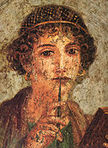Nancy Adams's Blog, page 8
September 25, 2013
A Meeting of Minds: Amelia and Bethesda (first in an occasional series)
Am I the only one old enough to remember Steve Allen’s Meeting of Minds? It aired on PBS from 1976 to 1981, and each episode featured guests who were historical characters from diverse periods in history (played by actors, of course). For example, the first episode brought together Teddy Roosevelt, Cleopatra, Thomas Aquinas, and Thomas Paine. Quite a diverse group!
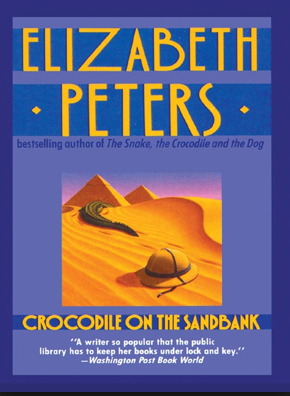 Just as Steve Allen’s scripts brought together greats separated by time and geography, I have often fancied the idea of bringing together fictional characters from different authors, enjoying the thought of their virtual tea parties. The first such pairing that occurred to me was the meeting of two strong-minded women from different periods of history: Amelia Peabody, featured in the Egyptian novels of Elizabeth Peters, which begin during the 1880s, and Bethesda, the companion of Steven Saylor‘s Roman detective Gordianus. I have often speculated on how interesting it would be to construct a parallel series to the Gordianus books, narrated from the distaff point of view. Bethesda would make an interesting narrator!
Just as Steve Allen’s scripts brought together greats separated by time and geography, I have often fancied the idea of bringing together fictional characters from different authors, enjoying the thought of their virtual tea parties. The first such pairing that occurred to me was the meeting of two strong-minded women from different periods of history: Amelia Peabody, featured in the Egyptian novels of Elizabeth Peters, which begin during the 1880s, and Bethesda, the companion of Steven Saylor‘s Roman detective Gordianus. I have often speculated on how interesting it would be to construct a parallel series to the Gordianus books, narrated from the distaff point of view. Bethesda would make an interesting narrator!
SPOILER ALERT: If you haven’t read Crocodile on the Sandbank by Elizabeth Peters or the first two novels of the Gordianus series (Roman Blood and Arms of Nemesis), hasten at once to repair those deficiencies and only then read this post.
The novels narrated by the indomitable Amelia Peabody display a heroine whose intelligence and strong independent streak enable her to rise beyond the feminine conventions of her day, working side by side with her husband, Emerson, on their archaeological digs. Nonetheless, her sensibilities remain firmly entrenched in Victorian culture and mores, during the early books, at least.
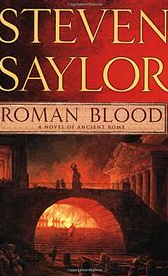 In the novels of Gordianus, on the other hand, Bethesda remains on the sidelines, an enigmatic and elusive, though intriguing, presence, her character filtered through Gordianus’s male sensibility. Though she continues throughout the series, first as his slave and mistress, then as his wife, Gordianus (and hence, the reader) always finds her something of an enigma: beautiful, imperious, fascinating, sexual and desirable—but ultimately mysterious. One of the reasons that Gordianus so readily gained my sympathies is that despite Bethesda’s initial status as a lowly slave, it is clear from her first appearance that she is the one who really rules the roost, that Gordianus, despite his rather endearing befuddlement when it comes to understanding the woman he had purchased as a slave in Alexandria, fully appreciates not merely Bethesda’s sexual charms, but her astute judgment and her quick mind.
In the novels of Gordianus, on the other hand, Bethesda remains on the sidelines, an enigmatic and elusive, though intriguing, presence, her character filtered through Gordianus’s male sensibility. Though she continues throughout the series, first as his slave and mistress, then as his wife, Gordianus (and hence, the reader) always finds her something of an enigma: beautiful, imperious, fascinating, sexual and desirable—but ultimately mysterious. One of the reasons that Gordianus so readily gained my sympathies is that despite Bethesda’s initial status as a lowly slave, it is clear from her first appearance that she is the one who really rules the roost, that Gordianus, despite his rather endearing befuddlement when it comes to understanding the woman he had purchased as a slave in Alexandria, fully appreciates not merely Bethesda’s sexual charms, but her astute judgment and her quick mind.
In addition to temperament, Amelia and Bethesda are linked by their affinity for cats. In the Gordianus books, Saylor frequently shows Gordianus likening his lover to the cat that she has adopted as a pet: beautiful, mysterious, clever—and deadly if need be. Though centuries later cats would become commonplace as pets in Rome, during the years when Gordianus lived, the last years of the Roman Republic, it was something of an oddity, an Egyptian custom, Gordianus notes, brought from his wife’s native Alexandria.
The cats that parade through Elizabeth Peters’ Amelia books have Egyptian origins as well—yet another tie binding Amelia and Bethesda. Though Amelia’s initial reaction to “the cat Bastet” (named for the Egyptian cat goddess), is rather guarded, she soon comes to appreciate the feline’s qualities. (Bastet first appears in The Curse of the Pharaohs, book 2 of the series).
If such a meeting were to take place, would Bethesda, often distant and aloof, unbend enough to have a true woman-to-woman chat with Amelia? And what would they talk about? Husbands (and how to manage them), murder investigations each has been privy to, the status of women, cats . . . ? (Having Bethesda’s current cat come into the room and jump on Amelia’s lap would certainly be a good way to break the ice and gain Bethesda’s trust: “Bastet never sits with strangers. She does you an honor.” ”I have always found cats to be most discerning of character,” Amelia might reply. “We have a cat named Bastet, too.”)
What other topics might come up? And what characters from different authors’ books would you like to bring together?
Let me know what you think!
Filed under: A Meeting of Minds, Books Tagged: Amelia Peabody, Bethesda, Elizabeth Peters, Gordianus, historical mysteries, Steven Saylor


September 19, 2013
The Wind in the Willows as Eco Story
Today I’m taking a page from one of my favorite blogs, Isaac Yuen’s Ekostories, putting an eco-lens to one of my favorite childhood books, Kenneth Grahame’s The Wind in the Willows.
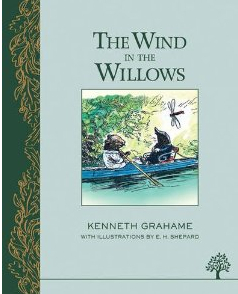 As with many children’s books, the main characters are animals, but the way Grahame portrays his animal characters and their environment sets Wind in the Willows apart from the crowd. To begin with, none of the animals has human names: we know them as Mole, the Water Rat (or, more familiarly, “Ratty”), Otter, the Badger, and Toad. Only Toad and Badger are ever addressed as “Mr.”—Badger because of his superior wisdom and Toad because of his wealth and pretensions.
As with many children’s books, the main characters are animals, but the way Grahame portrays his animal characters and their environment sets Wind in the Willows apart from the crowd. To begin with, none of the animals has human names: we know them as Mole, the Water Rat (or, more familiarly, “Ratty”), Otter, the Badger, and Toad. Only Toad and Badger are ever addressed as “Mr.”—Badger because of his superior wisdom and Toad because of his wealth and pretensions.
Like the animals’ names, the natural environment in Grahame’s book is treated very much from an animal’s point of view, and the world, though lovely and charming, contains dangers as well, and is described without cloying sentimentality. The Wild Wood occasions the most harrowing scenes in the book, and the tension as Mole becomes lost and hears unfamiliar and threatening whistles and sounds is far greater for me than the scene at the end where the animals band together to retake Toad Hall from the weasels. At the opposite pole is the wonderful chapter where Mole encounters the numinous, when he and Ratty set out to help Otter find his little, lost son.
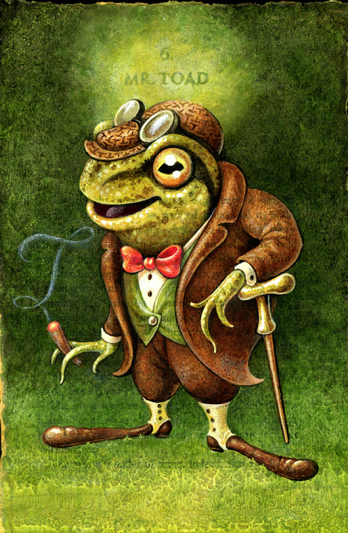
illustration by Leah Palmer Preiss, found on alphbooks.tumblr.com
Toad in many ways is given more human attributes than the others, a fact that sets him apart—and seldom in a good way. In fact, I now wonder if Grahame’s rather satiric portrayal of Toad is meant as a comment on human foibles, particularly our fascination with technology, which we see all too often as a toy for our own gratification rather than a tool to benefit society at large. In hindsight, Mr. Toad’s ill-fated love of motorcars seems a prophetic parody of the way the automobile has come to dominate nearly every aspect of life in more economically “advanced” countries. If we are unable to halt global warming, it will be in large part because we, like Toad, have become oblivious to all else but the lure of high speed, forgetful of the realities that lie in the here and now—and the consequences of our actions. “Poop-poop,” indeed.
Lest I sound too somber a note, taken at face value, Toad’s adventures provide a comic counterpoint to the rest of the book, and they are often the chapters that small children enjoy the most. Yet, for me, the real heart of the book lies elsewhere, in the friendship of Mole and Rat, their gentle meanderings through the landscape, Mole’s brief but chilling journey into the Wild Wood, Ratty’s inchoate longings that are awakened as he bids farewell to the migratory animals who pick up and leave as the seasons change, and the magical moment when Mole meets Nature’s god.
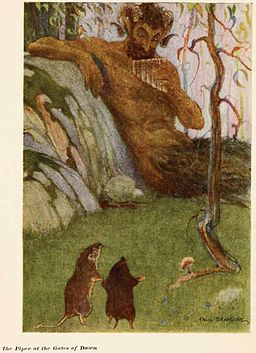
illustration by Paul Bransom from the 1913 ed. via Wikimedia Commons
What about you? What childhood books influenced your attitude toward Nature?
Filed under: Books, Nature Tagged: ecology, The Wind in the Willows


September 12, 2013
Trees in Paris (first in an occasional series)

Square du Vert-Galant, at the tip of Île de la Cité (photo by Rafael Garcia-Suarez, from Wikimedia commons)
Paris is my favorite city, and one of the reasons for this is the abundance of green space and trees. Miniature parks abound, such as the Place Paul Painlevé off the rue des Ecoles on the Left Bank or the little garden at the western tip of the Île de la Cité, just minutes away from Sainte-Chapelle and Notre Dame (pictured above). Even paved areas are filled with trees: a narrow strip along the southern bank of the Île Saint Louis which abuts the high retaining wall that guards the island from floods is planted with chestnut trees every few feet, adding to the romantic view along this iconic part of the River Seine.
The chestnut trees are ubiquitous. I think of them as THE Paris tree. Chestnuts line the long allées of the Jardin des Plantes, the city’s magnificent botanical garden, which is located just outside of the touristy areas, at the southern edge of the fifth arrondissement. They also grace Paris’s other major Left Bank park, the Luxembourg Gardens. Both parks are large and divided into a multiplicity of varied spaces that accommodate everything from sitting quietly with a good book under the trees to play areas for kids to allées and circuits for joggers. Each provides a neighborhood oasis where people can leave the bustling streets and relax.
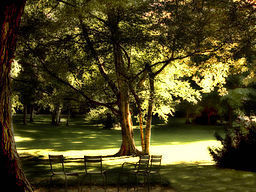
Luxembourg Garden (photo by Claude Andropia, from Wikimedia commons)
In his book Second Nature, journalist Michael Pollan writes about the way gardens create a particular type of space, neither wilderness nor concrete jungle, where humans and nature attain a mutual accommodation: Trees and bushes are pruned and weeds weeded out, but in return the plants that live in this tamed space are given attention and care. Paris is a perfect example of how this balance can be played out in an entire city.
If you’re curious to read more about trees in Paris, here are some excellent blog posts, the first two dealing with the historical reasons behind the city’s wealth of trees, the last one a lovely and detailed appreciation: http://www.deeproot.com/blog/blog-entries/history-of-street-trees-in-pariscity-making-and-the-golden-age-of-the-boulevard and http://sustainablecitiescollective.com/deeproot/150026/history-street-trees-paris-paris-minute-paris-modest and http://www.thesanguineroot.com/?p=1691
Enjoy!
Filed under: Nature, Paris, Trees Tagged: parks, urban landscape


September 5, 2013
Floats the Dark Shadow : a book review
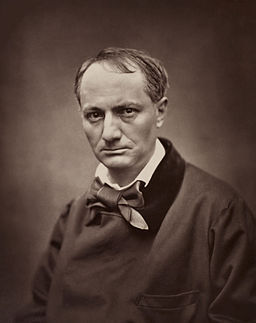
The poet Charles Baudelaire (photo by Étienne Carjat, ca. 1862, from Wikimedia commons)
I took French for all four years of high school. Somewhere in our third or fourth year, a student teacher brought in photocopies of Baudelaire’s “Correspondances” and one of his Spleen poems (“Quand le ciel…”).
I was in love.
With the French language. With the French Symbolist poets. The moody verse of Baudelaire and his successors struck just the right note of tortured melancholy so dear to the teenage soul. Unlike some other teen passions, however, this one has stuck.
Thus you can only imagine my delight when I began Yves Fey‘s extraordinary historical mystery and found myself in the world of Baudelaire’s heirs, the later Symbolists and décadants. The book’s heroine, aspiring artist Theo Farraday, is drawn into the orbit of the décadent world through her cousin Averill, a young man with dark secrets with whom she finds herself falling in love. Averill is a poet, part of the Revenants, a group of young writers who welcome Theo into their circle.
But a killer is stalking the streets of Paris, a killer of children. When the Revenants fall under suspicion, Theo begins to investigate on her own, certain the murderer can’t be someone she knows.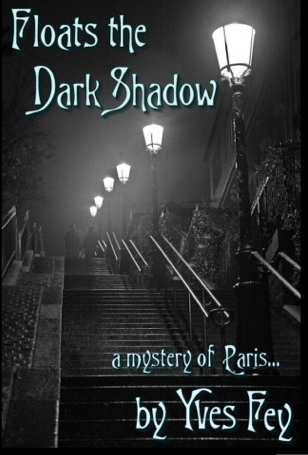
Theo and her male counterpart, police detective Michel Devaux, are fully drawn, sympathetic protagonists, and each of the secondary characters is vividly portrayed as well. Yves Fey skillfully brings the world of fin-de-siècle Paris to life, incorporating real people and events into the fabric of her riveting tale to create a rich and unforgettable tapestry. The killings are sadistic and dark, and the more squeamish reader may want to skim in a couple of spots, but I would urge anyone who loves Paris and historical mysteries to put FLOATS THE DARK SHADOW on their must-read list.
FLOATS THE DARK SHADOW has already received justified acclaim, winning a Silver Medal for Best Mystery from the 2013 Independent Publishers Awards. It also placed in both the Mystery and Historical categories of the 2013 Next Generation Indie Awards, and was a finalist in the ForeWord Independent Publishers Awards. Give yourself a treat and read it today!
Filed under: Books, Paris Tagged: fiction set in Paris, Floats the Dark Shadow, historical mysteries, Yves Fey


August 29, 2013
A Daphne Finalist
The phone call came a few months ago at work. “Your book is a Daphne Finalist!”
“It is?” My voice shot up two octaves into an ecstatic squeal. After the call, I worried that I’d given the Daphne coordinator a massive earache.
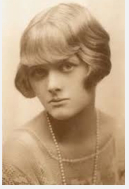
Author Daphne du Maurier
The next two days were a flurry of polishing the first 25 pages for the final round, then I headed over to my website and drafted a new home page, waiting to release it until the names of the finalists were officially up on the contest website.
The Daphne du Maurier contest is run by the Kiss of Death chapter of the Romance Writers of America, a chapter that focuses specifically on romantic suspense. (Check out the website’s cute video introduction!) Every year, unpublished writers are invited to submit the first few pages of their novels in various categories of romance as well as a “mainstream” category of suspense that isn’t required to have romantic elements. My main writers’ groups, Sisters in Crime and its online “Guppy” chapter, always post details of the contest, usually open for entries from mid-February to mid-March of each year.
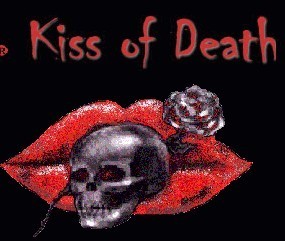 I’ve been entering mainstream category of the Daphne contest for the last seven or eight years now, and I’ve always appreciated the generous feedback. Comments from the judges have given me much needed encouragement (writers have such frail egos!) while at the same time providing valuable direction for ways to improve my work. It’s been encouraging to see my scores gradually go up over the years, proof that all that hard work of rewriting and attending to craft is beginning to pay off. A few years ago, my scores came very close, and though they were not close enough to make the finals, it was still a real boost to get overwhelmingly positive reviews from each of the four judges. Prior to that, one or two always seemed to love my entry, but the rest—didn’t. So that alone was a thrill.
I’ve been entering mainstream category of the Daphne contest for the last seven or eight years now, and I’ve always appreciated the generous feedback. Comments from the judges have given me much needed encouragement (writers have such frail egos!) while at the same time providing valuable direction for ways to improve my work. It’s been encouraging to see my scores gradually go up over the years, proof that all that hard work of rewriting and attending to craft is beginning to pay off. A few years ago, my scores came very close, and though they were not close enough to make the finals, it was still a real boost to get overwhelmingly positive reviews from each of the four judges. Prior to that, one or two always seemed to love my entry, but the rest—didn’t. So that alone was a thrill.
And now, I’m thrilled even more! I am so grateful to all the wonderful volunteers who take the time to judge and coordinate this marvelous learning opportunity for writers, year after year. I know that for me personally the Daphne contest has been a major factor in developing my work. Words of praise from judges who loved my voice and my work sustained me during periods of doubt, and words from those same judges, pointing out ways to improve along with their praise, have been some of my best guides, lampposts along the way.
Curious about my book? It’s an urban fantasy suspense set in Paris. Link here for the teaser on my home page.
Filed under: Books Tagged: Chimera, Daphne du Maurier contest, Nancy Adams, writing, writing contests


August 22, 2013
Fireflies
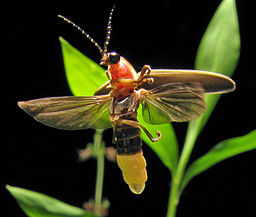
Photo by Art Farmer (Evansville, Ill.), courtesy of Wikimedia Commons (Firefly 0877)
At this time of year, twilight is marked by tiny flickers of light. Over the ivy, fairy lights wink in and out as the fireflies dance in their annual revelry.
I remember hearing years ago that by the early ’60s DDT had all but wiped out the firefly population, but then, after it was banned, they began coming back. So I also see these dancing lights as beacons of hope. Hope that humankind can change its ways and respect the natural world. Hope that we humans can appreciate the beauty of earth enough to change our foolish ways.
If you manage to glimpse a firefly sans fire, unlit, in the prosaic light of day, to the untutored eye it looks just like any “bug”: a dull-colored shell, six little legs, “buggy” eyes, and antenae. Nothing magical there. To the casual human onlooker, just another insect, a “bug,” a word that evokes for your average human reactions of disgust, dismissal, or downright hostility. Think of ads for insect repellents or poisons, the most well-known of which proudly boasts the slogan “kills bugs dead.” What does this say about our relation with an entire category of creatures with whom we share the earth? Not to sound too sanctimonious here: I have killed my share of houseflies and mosquitoes and I’m the loudest and shrillest of screamers if I catch sight of a roach. But what about the good bugs? The praying mantis, the lady bug, the bee, creatures who benefit us and—in the bees’ case—without whom life here on earth would be all but impossible.
Why do we persist in manufacturing poisons that kill good bugs along with those that carry disease? Poisons that can kill humans as well. Just a few weeks ago, I glimpsed a headline on the Internet where 22 children in India had died as a result of eating a school lunch that had been contaminated with pesticide. When will we learn?
The first step, I believe, is to look at the natural world and observe. To return to the firefly, when I went in search of images for this blog post, I came across several that showed a beauty I hadn’t even seen: hidden beneath the dull, dun-colored carapace is a beautiful brilliant bright orange head and upper body. The brilliant orange almost seems like a signal, telling those who take the trouble to observe that “hey, something special and bright is going on here.” Captured in the midst of flight, wings extended, the firefly is more beautiful yet—and then there are the magic “fairy lights,’ lit at twilight for all to see.
Filed under: Animals, Nature Tagged: bugs, fireflies, firefly, insects


August 15, 2013
Seasons
Seasons, a word with multiple meanings. On the most basic level, we use it to refer to the seasons of the year; metaphorically, we often refer to the seasons of our lives’; liturgical churches celebrate according to a calendar of seasons: Advent, Christmas, Epiphany, Mardi Gras, Lent, Easter, Pentecost. I have always loved the concept of seasons, perhaps because the book that is still my favorite from childhood, The Wind in the Willows, is organized around the year’s round. It begins with spring cleaning as Mole pops out of his burrow and discovers the wider world, continues into late fall and the beginning of winter as Mole finds himself lost in the Wild Wood, circles round to Christmas, when the Mole rediscovers his old home, and cycles back into summer, the long days on the river, the little Otter’s encounter with the holy spirit of Earth, and Ratty’s autumn discontent as he notices his fellows stirring, preparing for the great migrations.
Today is my first day of “retirement” from the day job. I put the word “retirement” in quotes because (a) it is not so much a retirement as a transition and (b) I am not yet of “retirement age.” I am transitioning from working for an educational institution to working for myself, from commuting over four hours a day (since last October) to commuting from the bedroom upstairs to the computer room (and sometimes the porch) downstairs, from working with strict manuals from the Library of Congress to working with the airy wisps of creative thought, my own and that of my fellow writers.
The Ash Wednesday service from the 1979 Book of Common Prayer for the Episcopal Church (U.S.) contains a line that has always stuck in my head: “We confess to you, Lord, all our past unfaithfulness: the pride, hypocrisy, and impatience of our lives.” It is this last item that always strikes me: impatience. Such a modern quality. Such an unexpected item for inclusion in a list of sins, yet one that surely even the holiest of persons has experienced at times, even if saintly enough to conceal its outward manifestations. As the stresses of a long commute, the attempts to juggle the day job with my editing clients and work on my own book, and frequent sleep deprivation mounted over the past year, I have felt myself giving way to impatience on a daily, sometimes hourly, sometimes continuous basis. Impatience—and its offspring, anger. (“Our anger at our own frustration,” as the Ash Wednesday service notes a couple of lines further.) Grouchy, bitchy, whatever you want to call it—too often, that has been my attitude.
In the past weeks, however, anger and impatience have finally given way to expectation, to joy, to hope. Instead of suppressing a scowl, I greet my colleagues with a genuine smile. I’m excited.
I have been fortunate in my workplace and colleagues; outside the commute, I have no cause for complaint. But I have known for years now a need to move on, and that desire has flamed in me with an urgency that has all too often burned with anger and impatience alongside the creative fires. I count myself fortunate to be able to follow my dreams at last. Like Mole, I’m ready to leave my little burrow and explore the wider world.
Filed under: Feasts/Seasons


December 13, 2012
Christmas Music: Hymnody of Earth
I stumbled on my favorite Christmas CD quite by chance several years ago, browsing in Tower Records. (Anyone remember Tower?)

Photo from composer’s website
It’s called Hymnody of Earth, and the composer is Malcolm Dalglish. I was attracted first by the album’s name and then when I noticed that most of the works were settings of the poetry of Wendell Berry, that clinched it. Most of them are for boys choir, another plus as far as I was concerned, and the primary accompanying instrument is the hammer dulcimer, which Dalglish plays. I can’t recall if I was already familiar with hammer dulcimer or not, but it was love at first note. For those who haven’t heard it, the timbre is quite a bit like a harp only much more percussive. It’s a magical sounding instrument, perfect for Christmas music.
Now, the album isn’t precisely Christmas, more winter solstice, but anyone familiar with Berry’s poetry knows the backbone of his spirituality is Christian. Same with the settings of Shaker lyrics and hymns that are part of this work. That said, nowhere is Christ or Christmas directly mentioned, making the album a suitable liturgy for any spirituality that celebrates nature, God, and human love. Perfect music for a quiet winter’s evening when your mood is contemplative rather than extroverted.
The album begins and ends with chant written by Dalglish, evoking a medieval procession. The opening chant includes frame drum (a very subtle thrumming, no rat-a-tat-tat here!) and the lovely chiming hammer dulcimer, while the ending number is unaccompanied voices that gradually fade into the distance—a bit like Benjamin Britten’s A Ceremony of Carols, and here and there are touches of Britten in the boys choir as well, but the overall style is unmistakably its own.
To listen to an excerpt, click here, and you will be taken to Dalglish’s website. The recording that I have is the early version, “as it was originally conceived for Malcolm Dalglish (hammer dulcimer and voice), Glen Velez (frame drums and shakers), and The American Boychoir” (quotation from website). It’s now published by the Musical Heritage Society. There is also a newer version put out by Ooolitic Music, which looks like Dalglish’s own publishing company. It looks like the new version ends with a livelier “Amen” for voices and instruments, but personally I love the way the original version fades away—more contemplative—but that’s just me.
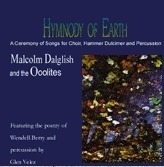
photo from composer’s website
Here’s his description, attached to the newer recording on his website: “There are moments in nature when wordless poetry washes over me, and I feel lost in the rhythm of a pure sound or vision. Hymns gather together people, words, and music to memorialize these transcendent moments in our lives. I found the poetry of Wendell Berry and the mysterious and primitive sound of the dulcimer, frame drums and shakers to be ideal collaborators in this broadly defined Hymnody.”
Hymnody of Earth is a wonderful work, and I hope many of you will become fellow fans and incorporate it into your own winter festivities.
What kinds of seasonal music do you most enjoy?
Filed under: Feasts/Seasons, Music Tagged: Christmas, Christmas music, Malcolm Dalglish, Solstice, Solstice music, Wendell Berry


December 6, 2012
Children’s Books / Adults’ Books
When I decided to self-publish my Christmas story last year, it received mostly positive reviews, but those who didn’t care for it so much had a common complaint: they thought they were getting a children’s book, and it wasn’t.
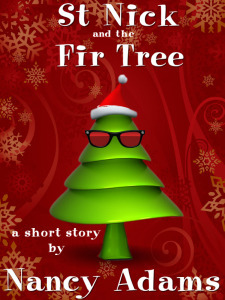 Nowhere on the cover or in the description is there mention of children as an intended audience, but apparently the combination of Saint Nick and a Fir Tree character spelled “Kid’s Book” to more than one person. This year I’m changing the description to read: “a Christmas tale for grown-ups who haven’t forgotten the magic.”
Nowhere on the cover or in the description is there mention of children as an intended audience, but apparently the combination of Saint Nick and a Fir Tree character spelled “Kid’s Book” to more than one person. This year I’m changing the description to read: “a Christmas tale for grown-ups who haven’t forgotten the magic.”
One reader grumbled that it was too grown-up for kids and too “silly” for adults. Well, to each their own, but I find it sad that some adults feel there is no place in their lives for indulgence in a bit of whimsy or make-believe.
On the other hand, there’s ample evidence that many of us continue to enjoy not only children’s classics that we remember fondly from our young days (The Wind in the Willows gets my vote for the children’s book that I continue to love and re-read the most of all) but also new classics such as Harry Potter that take us into the realms of youthful fantasy.
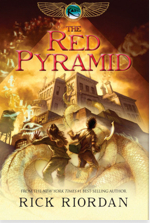 When I was visiting my sister this summer, I started reading my nephew’s copy of Rick Riordan’s THE RED PYRAMID, the first in the fantasy series that involves Egyptian gods and two modern-day kids. Such fun! I saw it last week at a bookstore and decided it was the perfect book to follow Tana French’s deep and gorgeous but tragic BROKEN HARBOR. Time to switch gears to something lighthearted after all that Hibernian angst.
When I was visiting my sister this summer, I started reading my nephew’s copy of Rick Riordan’s THE RED PYRAMID, the first in the fantasy series that involves Egyptian gods and two modern-day kids. Such fun! I saw it last week at a bookstore and decided it was the perfect book to follow Tana French’s deep and gorgeous but tragic BROKEN HARBOR. Time to switch gears to something lighthearted after all that Hibernian angst.
But what of books and stories like my “Fir Tree” that seem to be neither fish nor fowl? Fantasy that doesn’t have adult levels of sex or violence, but isn’t really written with a young audience in mind. I’m drawing a blank. Are there more out there? If you can think of one, let me know.
And meantime, bring on more young adult titles, especially good fantasy. I’d like to hear suggestions for those, too.


November 29, 2012
Hawk
The new commute is a major pain, but it has the occasional compensation.
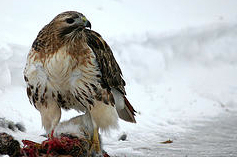 Like seeing a hawk up close for the second time in my life.
Like seeing a hawk up close for the second time in my life.
The school’s new digs are located in an office park about an hour’s drive from the city in rush hour traffic. (The gridlock on the expressway is appalling.)
Said office park has plenty of green: grass that doubtless is the doubtful beneficiary of assorted chemicals—a far cry from Whitman’s leaves—and a nice variety of trees, each trimmed to a uniform triangular shape and planted at uniform intervals. Very Stepford, like Magritte men in corporate bowlers dotting the landscape.
But the suits can’t control the sky.
I was on my way to the bus stop going home when I heard a crow calling and looked up. A large winged something hovered not far above me, white wings, and then it descended, giving me the closet view I have ever had of a hawk.
It was medium-hawk-size, I suppose, big but not humongous, maybe the size of a small housecat. Mostly white, especially underneath (I had already glimpsed the wings and belly many times, catching glimpses of it floating above in the afternoon sky as I waited for the bus) with some brown and gray striping, the most noticeable mark a rusty red bar in the middle of its tail.
The hawk settled on a hillock just above the sidewalk where I’d stopped to stare at it, maybe about five feet away, maybe a bit less. My previous close-hawk-encounter had been through the window of our kitchen sink, watching the neighborhood hawk as it perched on the fence bordering our yard. The next-door neighbors there have a nice array of bird feeders which also attract squirrels and other small animals, and I fancy that was the reason for the hawk’s interest.
It was incredibly cool to see this raptor up close, with no intervening window pane. It paid me no mind; the feathers and down scattered around the bird’s feet gave evidence of a recent kill, and Hawk was more interested in poking about the remains for a last juicy morsel than taking heed of anything so commonplace as a human passing by.
What is it about animals of prey that so excites the imagination? The feelings of awe and wonder that any close sighting of a wild creature gives to me intensify. I love seeing and hearing chickadees—my favorite bird—but the pleasure there is more domestic, more of a “How’re you doing, neighbor.” Awe is the province of the hawk, the owl; awe requires the presence of power and danger in the creature observed, not unlike the religious feeling I get when contemplating God as an inestimably larger force of unimaginable power.
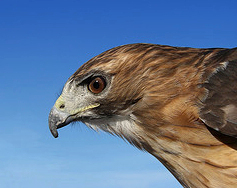
red tailed hawk from Glass_House, courtesy of Creative Commons (again, mine had more of a white head)
This is something I ruminate on quite a bit. Nature, red in tooth and claw, majestic, awe-inspiring, but how to reconcile this with my convictions about love and peace? Of course those of us who aren’t vegetarians all live on other things, so any move to condemn the hawk, the predator, would be hypocritical in extreme. Is it because creation is flawed, fallen? But creation would be so much the poorer without its awe-inspiring creatures of prey: the raptors, the owls, wolves and big cats.
Perhaps I should simply accept it as one of those Mysteries with a capital M, and leave it at that.
What inspires awe and wonder in you? (And is there anyone out there who can tell me what kind of hawk? I assumed it was a red tail, but the red tail hawks in Peterson’s all have solid red tails, not a single stripe.)



